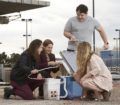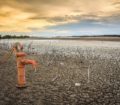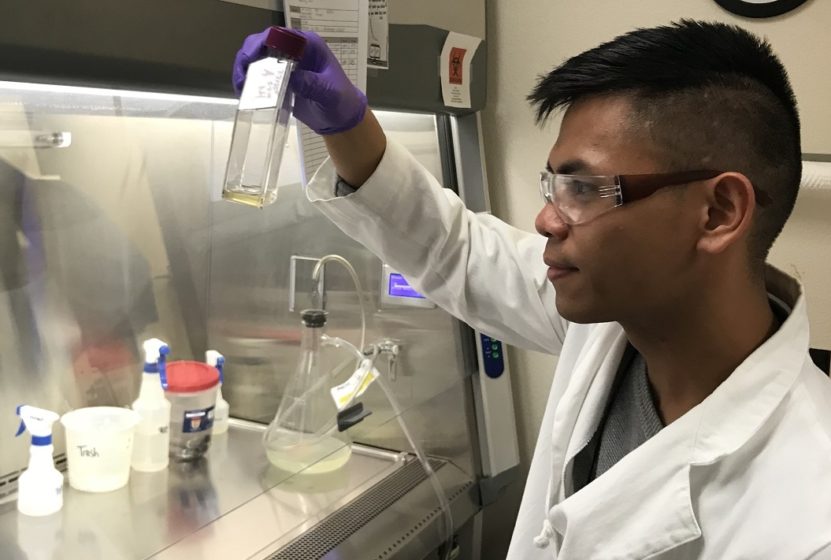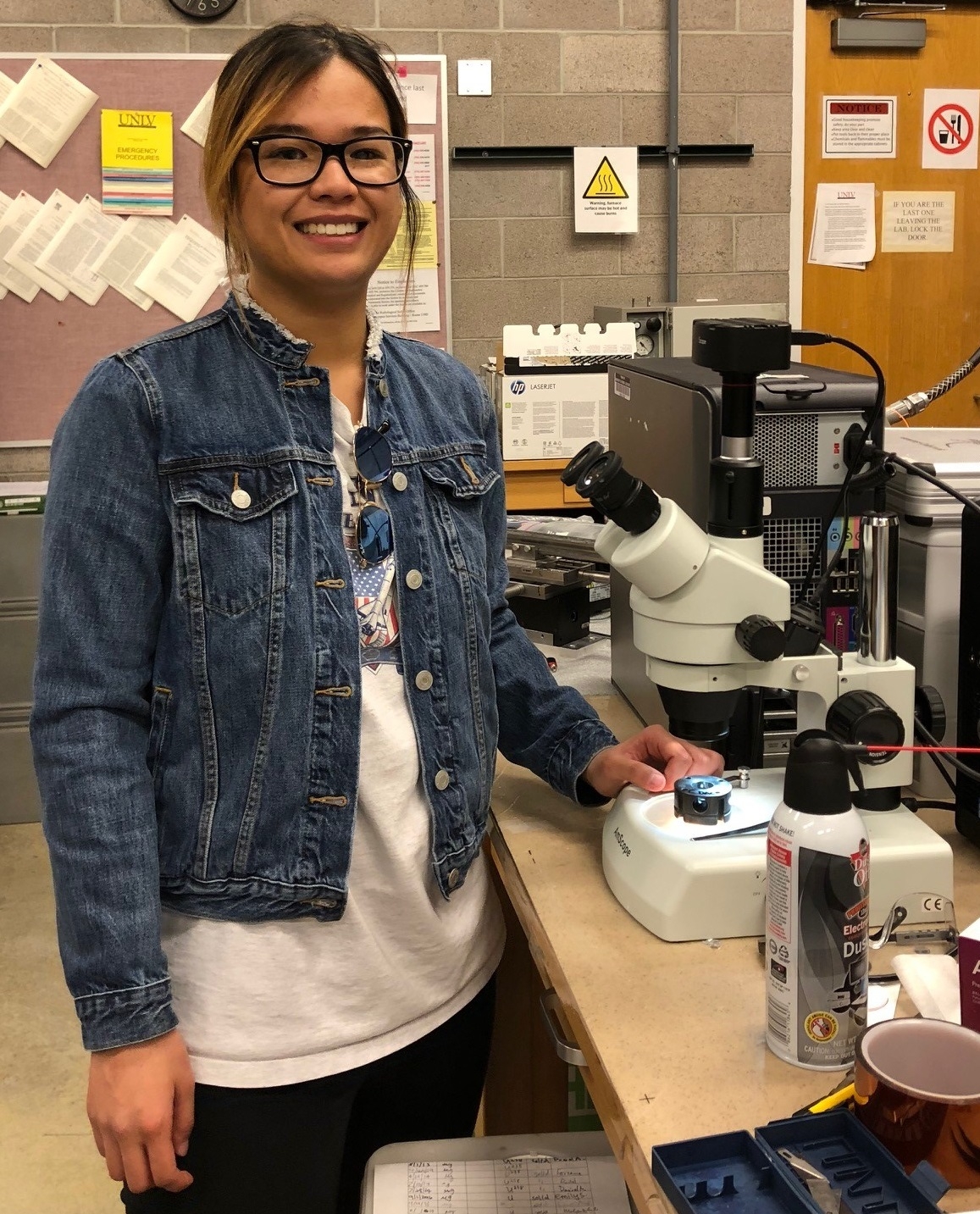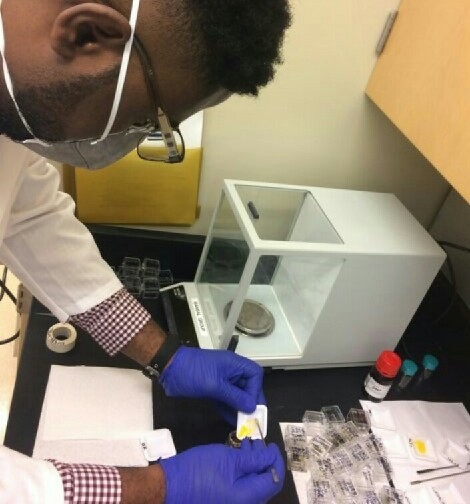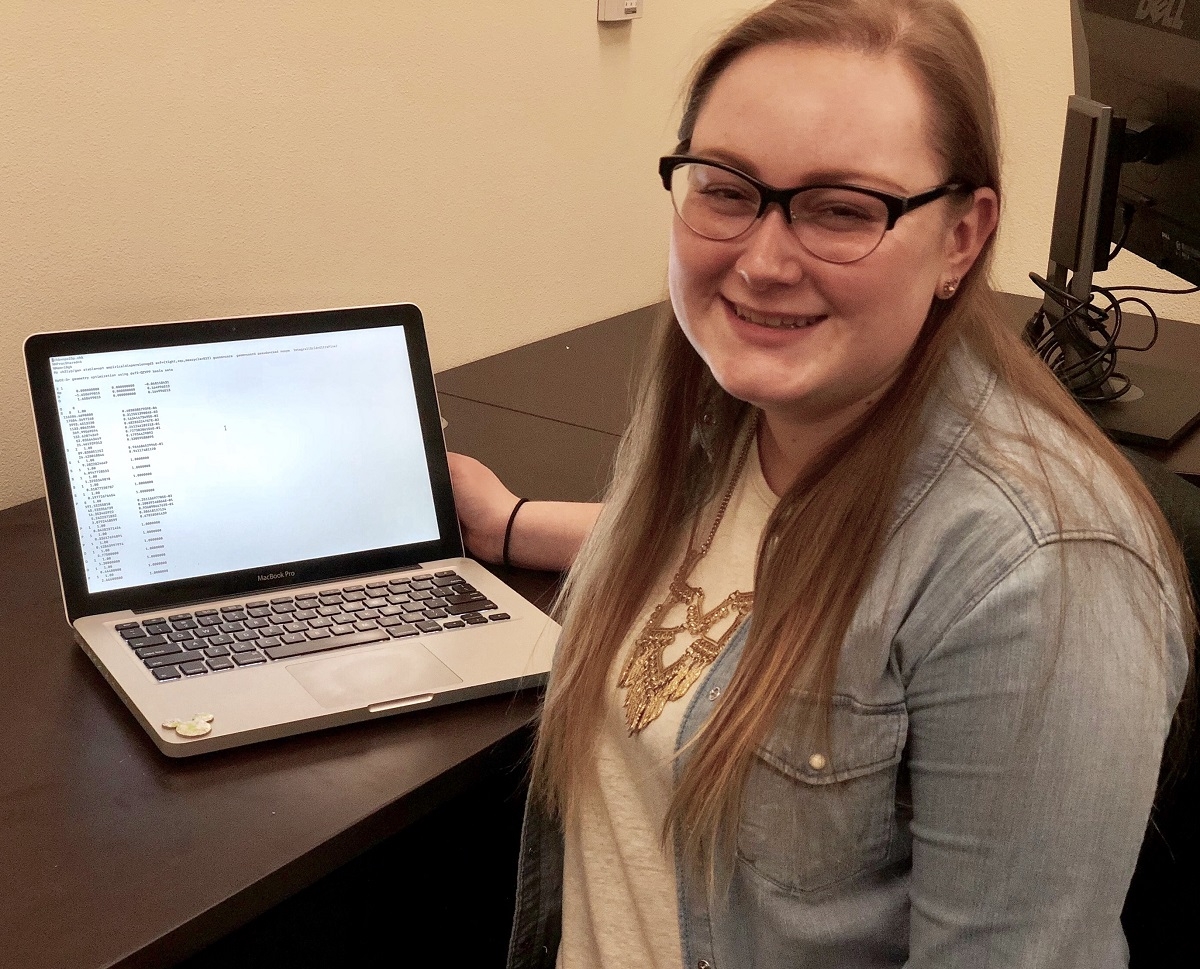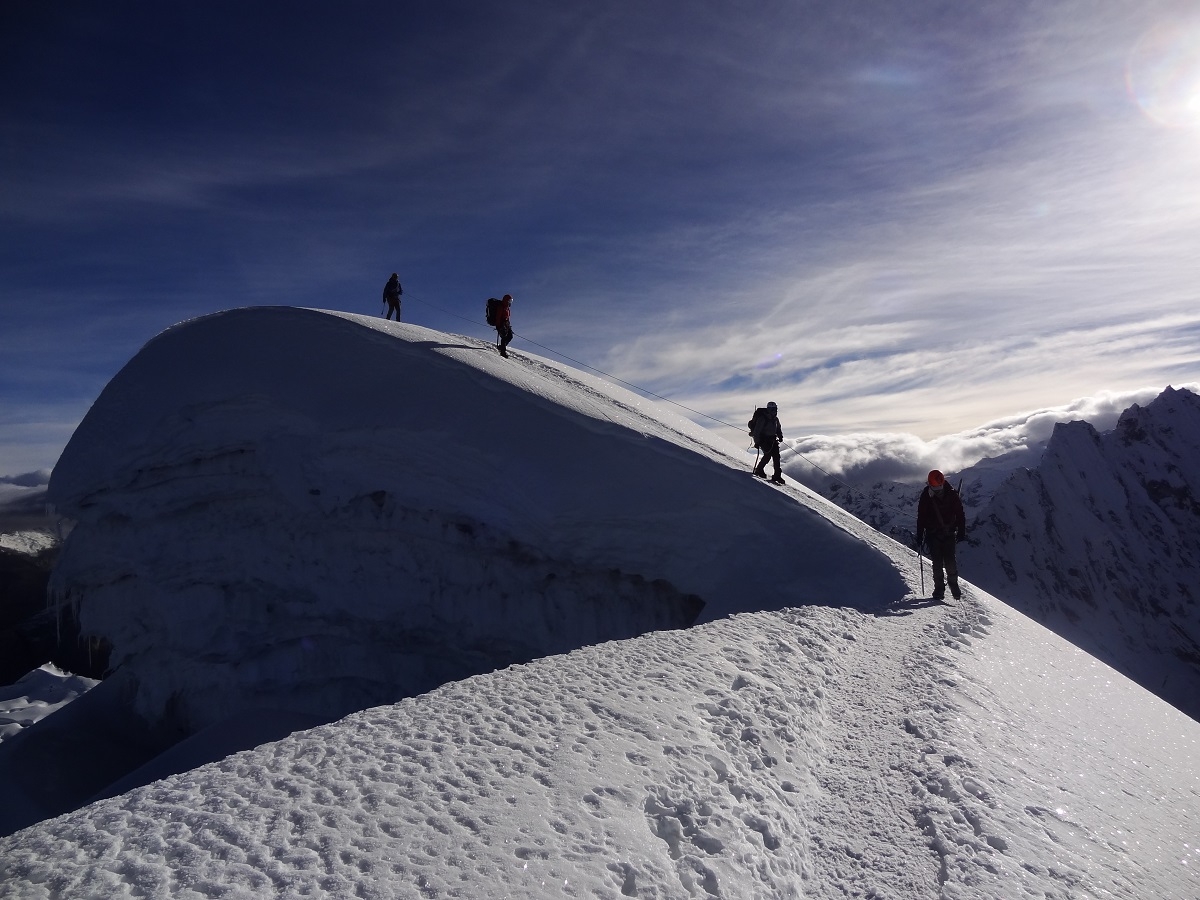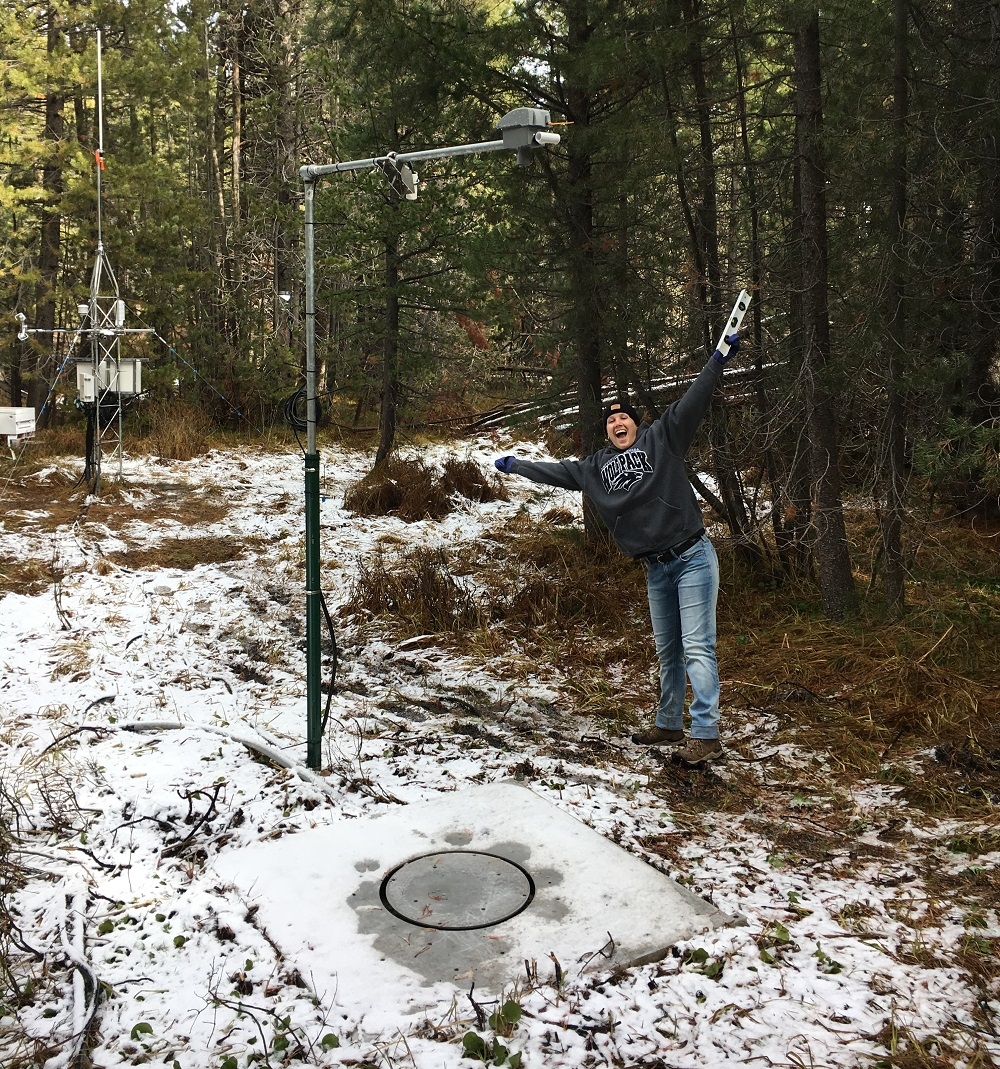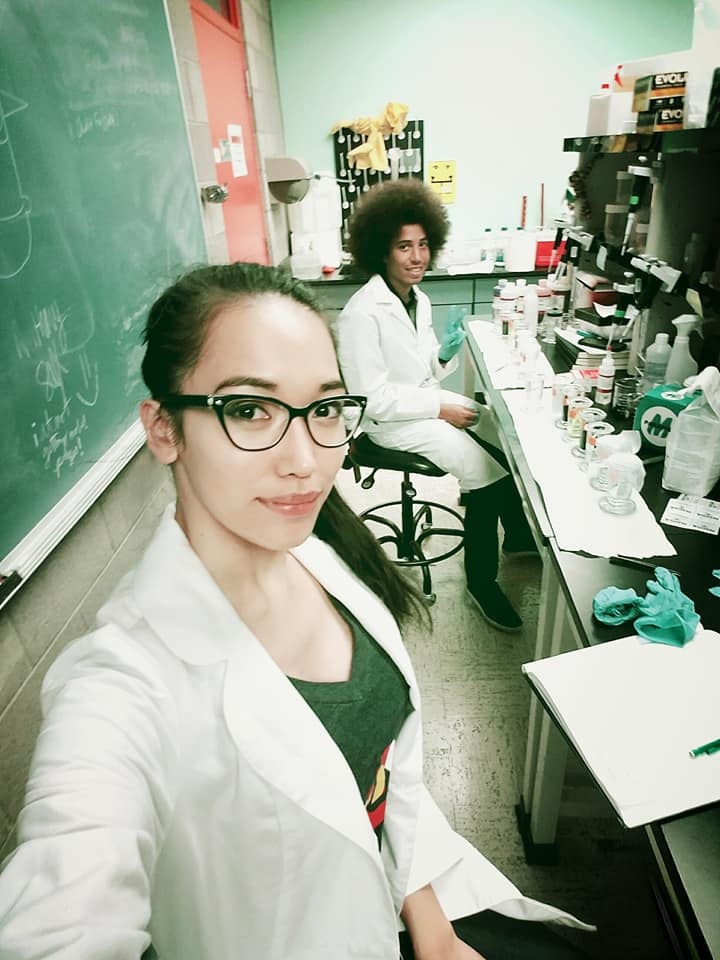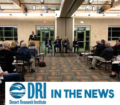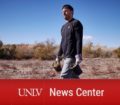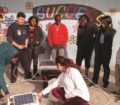2017-2018 UROP student Jeremy Vergara, Nevada State College in the chemistry lab.
Photo by Dr. Amber Howerton, Mentor
Thinking Outside the Classroom
NEXUS program helps undergraduate students learn critical research skills in STEM disciplines
By Jane Palmer
March, 2018
Life as an undergraduate in the fields of science, technology, engineering and math (STEM) typically involves going to lectures, doing course projects and sometimes conducting controlled experiments in the lab or the field. The NEXUS-funded Undergraduate Research Opportunity Program (UROP) aims to give students that little bit extra to prepare them for the outside world by engaging them in real research projects.
For some students the program has inspired a motivation to pursue a graduate degree but gaining undergraduate research is valuable for all students in STEM fields, says Dr. Scott Mensing, Director of Undergraduate Research at the University of Nevada, Reno (UNR). “The goal really is to provide undergraduate students with an experience that’s part of their education outside of the classroom doing research on a problem for which there is no known answer,” Mensing says. “I think that makes them better problem solvers and independent thinkers no matter what field they go into.”
Mensing co-leads the NEXUS UROP program with Dr. Kurt Regner, a professor at the University of Nevada, Las Vegas (UNLV), in partnership with the UNLV Office of Undergraduate Research, directed by Dr. Liam Frink.
“Undergraduate research experiences are a proven mechanism to attract students to science careers,” Regner says. “Undergraduates that participated in research sponsored by the NEXUS program cite many positive benefits, including increases in communication skills, working independently, and problem solving. They also cite an improvement in technical skills, hypothesis development, and data analysis development. The gains in personal and professional growth are the specific traits that college professors long for in students and employers look for during interviews.”
2017-2018 UROP student Maranatha Malonzo, physics undergraduate, in high-pressure laboratory at the University of Nevada, Las Vegas. Mentor Dr. Ravhi Kumar. Daisy Lopez Photo
A Soup to Nuts Research Experience
Students at any institution within the Nevada System of Higher Education (NSHE) can either apply to do a 10-week summer or 9-month academic year project as part of the UROP program and the Bright Stars program helps recruit students. The Bright Stars program introduces students to the possibility of undergraduate research opportunities either at their institutions or at one of the research institutions within NSHE. “Bright Stars allows interested students to ask questions about undergraduate research in a non-threatening, peer-facilitated environment,” says Michele Casella, Education, Outreach and Diversity Administrator for Nevada EPSCoR.
Whether accepted into the program or not, they learn one critical skill during the application process: formulating a testable research question. For professional scientists the first stage of a research project involves asking a question and, from that question, formulating a hypothesis to test in their research. To emulate this experience, students interested in participating in the UROP program have to come up with their own ideas about what they want to investigate.
“The ideas come up in conversation with a faculty mentor who usually helps the student refine the concept,” Mensing says. The mentor will often point the student toward the methodology required to test the concept and what would be achievable, or not, during the duration of the program, Mensing says.
The students then engage in another essential skill required for life in research: proposal writing. The student encapsulates their research question, and how they’ll test it, into a proposal that is submitted to the UROP program. “In writing a proposal, they really have to sharpen their thinking, writing and argumentation skills because these proposals are very short,” Mensing says. “So they gain a much better ability to represent their ideas and the significance of their ideas.”
To help the students, Nevada EPSCoR hosts application writing workshops at UNLV and UNR. “These writing workshops are hosted in collaboration with campus Writing Centers so as to provide students with writing support and resources, making the process less cumbersome” Casella says. The writing workshops are also held in rural locations, therefore giving access to all Nevada undergraduates the opportunity to attend.
A team of faculty reviewers from throughout the NSHE institutions review and rate the applications based on the strength of the research concept, whether it is possible to investigate in the timeline and the proposed methodology for research. Each year the panel selects twenty students for summer research and another 15-20 students for academic year research opportunities.
2017-2018 UROP student Isaiah Henry, University of Nevada, Las Vegas pouring Lead II Iodide into a vial containing Gamma-Butyrolactone in preparation for running a Cs(PbCd)I2Br process. Mentor Dr. Shubhra Bansal. Dakota Schwartz Photo
<divstyle=”text-align: justify;”>The UROP awards are also made to students at NSHE community and state colleges. Jeremy Vergara, a student from Nevada State College, a nationally-designated Minority Serving Institution, is currently investigating the enzyme alcohol dehydrogenese 1, which is involved in metabolizing alcohols in the liver. Vergara’s research could yield insights into the use of bile acids as a cure for alcoholism.
The final stage of both the nine-month and summer programs involves the students giving either an oral presentation or poster at the UROP symposium which is held at both UNR and UNLV. “So they develop some speaking and presentation skills at that point,” Mensing says.
But the real value lies in what the students learn before the presentation, Mensing says. “They learn how to think and problem solve. And then they learn how to work within a group,” he says. “That’s not what you get if you’re just in the classroom.”
2017-2018 UROP student Shaina Bird, University of Nevada, Reno changing the B3LYP functional in an input file to one of the other 24 Kohn-Sham DFT exchange correlation functionals. Mentor Dr. Samuel Odoh. Janelle Bustarde Photo
Multiple Benefits
Since 2015, the NEXUS program has funded 136 students to participate in the UROP many of whom have gone on to pursue graduate research, present at national conferences and even publish their research.
The program provides students with a realistic taste of research in either an academic or industry setting. “Most of them realize that the research does not follow a straight, forward path, so that they have to make modifications along the way,” Mensing says. “They start with this idea but rarely does the idea actually lead all the way to the end of the path.”
As such, students have to learn to cope with experiments that don’t work, or simply reach a dead end. And frequently they have to learn to be flexible and resourceful. The UROP program also teaches one invaluable skill needed for whatever career they pursue: working as part of a team.
“Research is rarely done in a vacuum,” Mensing says. The UROP students are usually working with other researchers and they practice learning from others and contributing using their own skillset. “The practice helps build an understanding, especially within the STEM disciplines, of how to do effective science within a team setting,” Mensing says.
Each year, at the final symposium, Mensing walks around the poster session asking the students about their research and their experiences in the UROP program. Nearly all the students report on the benefits of the experience, he says.
“They say they learn much more than they do in the typical classroom setting and that they appreciate the independent thought that they’ve gained from having to really solve a problem on their own,” Mensing says. “Many say it’s one of the most important intellectual growing experiences that they’ve had at the university.”
2017-2018 UROP student Chris Stevens, University of Nevada, Reno. In addition to his UROP scholarship, Chris was able to secure support from his mentor, Dr. Patrick Arnott to perform field work in Peru in the summer of 2017. Climbers descend from the summit of Vallunaraju (5,686 m) after taking snow samples and albedo measurements, pictured L to R, Nilo Wilmer, Bria Riggs, Chris Stevens, Jeff Pratt. Chris Stevens Photo
2017-2018 UROP student Mackenzie Kohler, University of Nevada, Reno installing snow depth sensors and snow water equivalent plates at Sagehen Creek Field Station. Mentor Dr. Adrian Harpold. *This work has been published in an American Geophysical Union publication and garnered a research spotlight in AGU’s EOS. Ava Cooper Photo
_______________________________________
Meeting the Demand for a STEM-capable Workforce
_______________________________________
In February 2018, the National Science Board (NSB), the presidentially appointed advisory body to the National Science Foundation, released its policy companion statement to the Science and Engineering Indictors 2018, stressing, “Our nation’s future competitiveness relies on building a STEM-capable U.S. workforce.”
In this statement the NSB stressed that knowledge and skills in the disciplines of Science, Technology, Engineering and Mathematics are vital to U.S. businesses. Creating a strong and diverse STEM-ready workforce is essential to economic and social prosperity and academic institutes have an important role to play in this effort, the NSB authors assert.
“The NEXUS-funded Undergraduate Research Opportunities Program (UROP) helps to meet this workforce development need by training students in the STEM disciplines and giving them vital experience in creative problem solving in the lab and in the field” says Dr. Gayle Dana, NEXUS Project Director.
2017 Summer UROP student Camille Catelo, University of Nevada, Las Vegas (front) and high school student Dartanyon Jones (back) doing research on naturally occurring asbestos (NOA) and its potential health effects to the population of Southern Nevada. Mentor Dr. Sean Neiswenter. Camille Catelo Photo
_______________________________________

NEXUS Notes is a monthly publication of the Solar Nexus Project, which is a five-year research project funded by the National Science Foundation’s Established Program to Stimulate Competitive Research “EPSCoR” (Cooperative Agreement #IIA-1301726) focusing on the nexus of (or linkage between) solar energy generation and Nevada’s limited water resources and fragile environment.
Any opinions, findings, and conclusions or recommendations expressed in this material are those of the author(s) and do not necessarily reflect the views of the National Science Foundation.
_______________________________________
If you would like to know more about the NEXUS project,
please contact, Dr. Gayle Dana
Gayle.Dana@dri.edu
530-414-3170
_______________________________________

